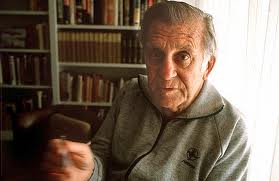“You can only do. Or be, sort of.”

If prizes were given for the most nauseating cover for a novel of literary fiction, this would be at the top of my list.
In his longest novel, written in 1970, Nobel Prize-winning Australian author Patrick White examines the question of an artist’s creativity, where it comes from, whether it can be controlled, and what obligations, if any, accompany it. As he traces the life of Hurtle Duffield from the age of four until his death as an elderly (and successful) avant-garde artist, we see Duffield always as somehow different from his peers.
The son of a laundress and a bottle collector, Hurtle is from birth inspired, painting large images on walls as a toddler, but he recognizes at an early age that “people look down at their plates if you said something was ‘beautiful.'” To provide him with opportunities which will allow his genius to flourish, his parents sell him, when he is four years old, to the wealthy family for which his mother works.
As a member of the Courtney family, Hurtle travels and becomes educated, though he continues to see rather than think. For him, the usual emotional traumas of adolescence are accompanied by unique questions of his identity, both because of his two families and also because of his view of the world. Not religious, he sees God as the Great Vivisector, and men treating each other as animals, slaughtering each other in war.
When he himself goes off to war and returns to find that the family has gone in separate directions, he devotes himself, once again, to his art, using women who love him as vehicles for his own self-expression and behaving as a vivisector himself. About his painting of one model, White says “[Hurtle] disemboweled her while she was still alive.” As time passes, Hurtle continues to search for love, inspiration, self-expression, and some sort of balance in his life between his immense need to paint, his desire for personal connection, and his simultaneous need to be alone.
White’s prose style is direct and concise, elegantly simple, and easy to understand. He uses colloquial speech–words like “smoodge,” “sook,” “slommacky,” and “mumped,” which must be understood from context–and reveals character and action through dialogue. The novel is old-fashioned, using a straight chronological narrative with no complex flashbacks, and it is quite romantic in its plot elements, despite its serious theme development. The biggest problem for the reader is that the main character is not very likable, nor does he inspire a great deal of empathy – a difficult character to live with for approximately six hundred pages – and I’m not sure how typical he is of the artists he is supposed to represent.
Note: If prizes were given for the most nauseating cover for a novel of literary fiction, this would be at the top of the list.
The author’s photo is from http://radaris.com
Also by Patrick White: RIDERS IN THE CHARIOT , VOSS, and THE HANGING GARDEN

